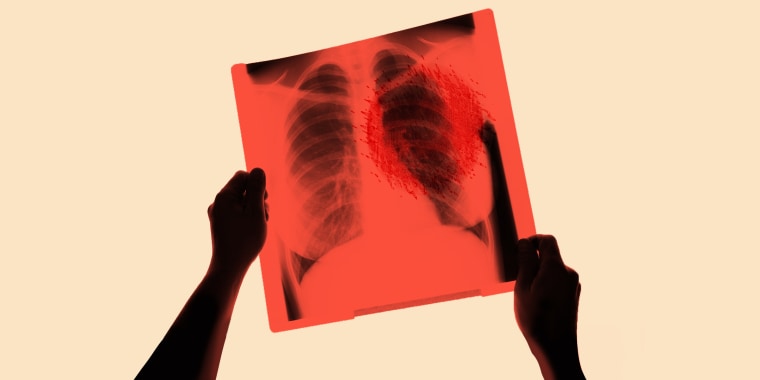Just a day after Rush Limbaugh's death following an advanced lung cancer diagnosis, former senator and presidential nominee Bob Dole, 97, announced he's been diagnosed with stage 4 lung cancer.
Earlier this month, small cell carcinoma, a type of lung cancer, was blamed for the death of “Saved by the Bell” star Dustin Diamond at age 44.
“He was diagnosed with this brutal, relentless form of malignant cancer only three weeks ago. In that time, it managed to spread rapidly throughout his system,” Roger Paul, a spokesperson for the actor, told NBC News.
The disease takes a heavy toll on Americans: Lung cancer is the second most common cancer in both men and women in the U.S. It's also the leading cause of death from cancer.
What are the types of lung cancer?
Most people think of lung cancer as one disease, but there are actually two main types, which grow differently:
Non-small cell lung cancer: this is the more common type, accounting for 80-85% of cases, according to the American Cancer Society.
Small cell lung cancer: it’s much rarer, accounting for about 10-15% of all cases, but it grows and spreads faster than the other type. By the time most patients are diagnosed, this cancer will have metastasized outside the lungs. This is the type identified as Diamond's cause of death.
It's not clear which type Limbaugh had or which type Dole currently has, but all three men were diagnosed with stage 4 lung cancer — with the disease discovered when it had already spread.
What causes lung cancer?
About 80% of lung cancer deaths are caused by smoking, and many others are caused by exposure to secondhand smoke, the American Cancer Society noted.
Current and former smokers are most at risk for small cell lung cancer, according to the Cleveland Clinic. While it’s rare for a non-smoker to be diagnosed with small cell lung cancer, it can happen.
Other risk factors include older age; having a family history of lung cancer; exposure to asbestos, arsenic, chromium, beryllium, nickel, soot or tar in the workplace; being exposed to radiation from radiation therapy, certain imaging tests or radon at home or at work; air pollution or an HIV infection.
Sometimes, lung cancer strikes people with no known risk factors for the disease. "There's a stigma that is associated with lung cancer, where people think, 'If somebody never smoked, they would never get the lung cancer,'" said Dr. Helena Yu, a medical oncologist at Memorial Sloan Kettering Cancer Center in New York.
What are lung cancer symptoms?
Early-stage lung cancer that hasn’t spread often causes no symptoms. When warning signs do appear, the American Lung Association says they include:
- a cough that doesn't go away and gets worse over time
- hoarseness
- chest pain that’s often made worse by deep breathing, coughing or laughing
- shortness of breath or wheezing
- frequent lung infections such as bronchitis or pneumonia
- coughing up blood
- loss of appetite
- unexplained weight loss
- fatigue — Limbaugh had said he started feeling under the weather before his diagnosis.
There's no good way to scan for lung cancer early. For now, the best advice is to get screened for lung cancer every year if you have a history of heavy smoking and are 55 or older, experts said.
What is the treatment?
Small cell lung cancer grows quickly, so it usually responds well to chemotherapy and radiation therapy. Surgery, immunotherapy and laser therapy may also be used.
Non-small cell lung cancer has those treatment options plus others, including targeted therapy, cryosurgery, photodynamic therapy and electrocautery. Combining treatments can be more effective than relying on one approach.
Lung cancer is treatable but not curable, so it can return.
What is the lung cancer survival rate?
More than half, 56%, of people whose lung cancer is caught before it spreads to other parts of the body live five years after diagnosis, according to the American Lung Association.
That number drops to 5% for patients whose lung cancer has spread to other organs. More than half of people with lung cancer die within one year of being diagnosed.



